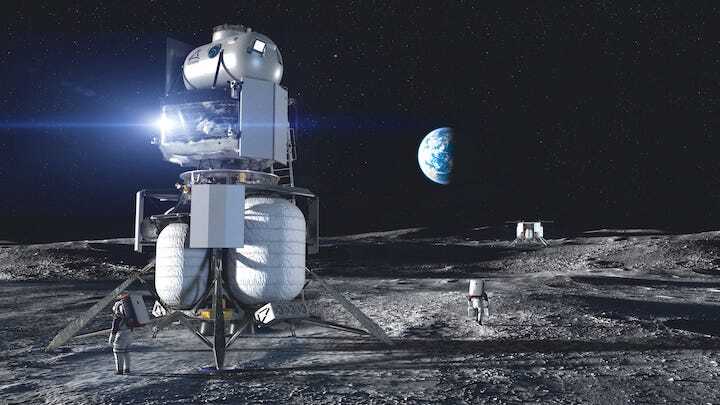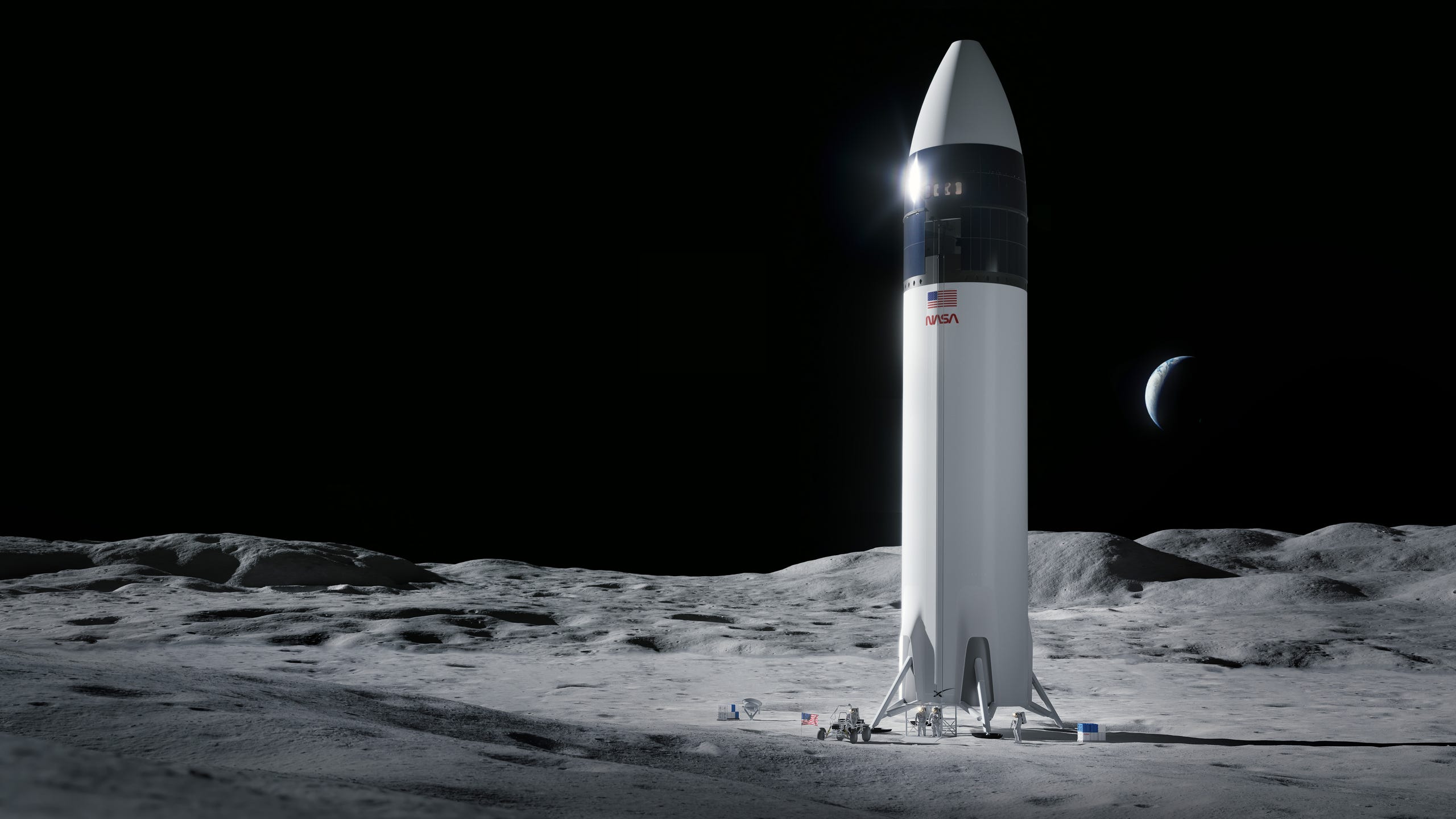26.03.2022
NASA will choose a second company to develop a lunar lander to complement SpaceX's Starship to ensure a sustainable human presence on the moon.
NASA last year selected SpaceX as its sole commercial partner to ferry astronauts to the lunar surface from an orbiting "Gateway" space station as part of the agency's Artemis program.
NASA administrator, Bill Nelson, said he expects about one human mission to the moon each year after Artemis III, now set for 2025.
“But beyond Artemis III we want to increase the healthy competition and advance our lunar capabilities to support more science, more exploration and an emerging lunar marketplace," said Jim Free, associate administrator for NASA’s Exploration Systems Development Mission Directorate.

Blue Origin is the prime contractor for the "National Team," which includes Lockheed Martin, Northrop Grumman, and Draper. The team’s design is a three-stage lander that harnesses the proven spaceflight heritage of each team.
NASA
The agency now seeks a second option to deliver its astronauts to the moon's surface.
Simultaneously, SpaceX will be able to submit its own proposal for a second crewed mission to the lunar surface under its current Human Landing System contract.
The announcement comes as no surprise. Following a formal protest — and eventually denied lawsuit from Blue Origin — the agency announced that "there will be forthcoming opportunities for companies to partner with NASA in establishing a long-term human presence at the Moon under the agency’s Artemis program, including a call in 2022 to U.S. industry for recurring crewed lunar landing services."
Previously, NASA selected three industry partners to develop HLS concepts, SpaceX, Blue Origin, and Dynetics. From there, SpaceX was awarded the $2.9 billion contract to develop Starship as NASA's commercial human landing system for moon missions.
In statements provided to FLORIDA TODAY, both Dynetics and Blue Origin indicated that they plan to compete for funding with NASA's new "Sustaining Lunar Development" opportunity.
In addition to selecting a second supplier of lunar landing services, NASA has also chosen to pursue a parallel option for SpaceX to secure one additional opportunity to land astronauts on the moon under the Artemis program.
However, the opportunity comes with provisions. Outlined in a statement provided by NASA, SpaceX will need to "transform the company’s proposed human landing system into a spacecraft that meets the agency’s requirements for recurring services for a second demonstration mission."
SpaceX, though, has yet to receive clearance from the Federal Aviation Administration to conduct an end-to-end orbital test flight of its Starship and Super Heavy booster.
Musk remains optimistic that the company will be able to complete the test within the next few months, "We’ll have 39 flightworthy engines built by next month, then another month to integrate, so hopefully May for orbital flight test," he posted to his Twitter account.
If all remains on schedule and SpaceX continues to make progress with its Starship, NASA and SpaceX will conduct its first uncrewed test flight this year and land humans on the moon no earlier than 2025.

